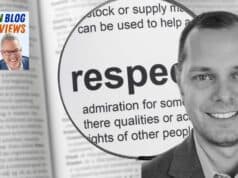Mark's note: Today's post is a guest contribution from Paul Critchley. Check out his previous posts here.

As a long time Lean practitioner (and now Lean consultant), I have been asked lots of questions about Lean over the years. There's one I have gotten more often than the others, though, especially from business owners and managers: “What's the biggest bang for my Lean buck?”
Lean means different things to different people. The business owner who sees Lean as a way to make more money is different than a shop floor associate who sees it as a way to make his or her work easier. What's interesting to me is how, in 2016, there can still be so many differing opinions about Lean and its benefits. In some cases, there are folks who actually believe Lean just plain won't work, as if Lean was some kind of special program that can only be applied given a certain set of inputs in certain industries. In many of these cases, folks mistakenly chalk Lean up as mostly “doing more with less,” with a dash of good housekeeping. Ugh.
For those who do see the potential, by far the biggest pushback I get to practicing Lean is not having the time. This isn't surprising. Companies often focus on their short-term goals at the expense of long-term prosperity, and as such, tend to flex their workforce in order to “make the numbers.” By far, labor is the easiest lever to pull that has an immediate bottom-line effect on a balance sheet… and so it gets pulled. A recent example of this short-sightedness comes from UTC/Carrier, as they just announced that they'll be closing two plants in Indiana and moving operations to Mexico, where labor is a lot cheaper. You can watch the video of the announcement to employees here. It's a shameful example of what a lack of respect looks like, directly from an employee perspective.
So, when people ask me “What's the biggest bang for my Lean buck?” I always answer the same way: “Respect your People.” Truly, that is the essence of Lean. Everything else – 5S, SMED, VSM, TPM… these are methods and tools to use to help you show respect.
I have blogged before about my personal experiences in industry (you can read them here), and I have no doubt that you will be able to relate to the stories I reference. These problems aren't new, nor are they relegated to a certain industry. With ever-decreasing headcounts, we are asked to do more work in the same amount of time with fewer resources. To put it another way: we are set up to fail. This isn't Respect for People. It's the exact opposite.
So, how do you keep all the balls in the air, given the current corporate climate? If you follow the advice of a former manager of mine, you “just figure it out.” Another manager once told me “you just keep your head down and plug through it.” Sage-like advice, no? For the record, neither of these guys ever wrote a book about Leadership…
Instead, I offer you this answer: Respect your People.
Lean is all about removing waste and delivering more value to your customers. However, we too often think that the people who are buying our products or services are our only “customers”. But what about our internal associates? These are folks that we spend more time with, Monday through Friday, than we do our families (accounting for sleep time). Doesn't it make sense to treat them as customers too?
Respect for People means caring about people from the heart and not from the checkbook. It means asking about their kids, their work and their workstation while at the Gemba. Are they able to keep up with production demands, or are they leaving work every day feeling like they failed because they didn't hit their quota? Are they coming in on weekends, sacrificing time with their families, because their tools and systems are inadequate to allow them to succeed during regular hours Monday through Friday? Sure – sometimes folks have to put in extra effort for a project or to get ready for an upcoming customer visit, but those times should be the exception; not the rule. And shame on those leaders who don't recognize people for those extra efforts when they occur. Miss those opportunities only a few times, and you can watch the organizational culture change into one of resentment and skepticism. Good luck rallying the troops for Continuous Improvement then…
It comes down to being present in mind, body, and spirit, which, to be frank, is something leaders and managers should be doing anyway. Everything else – all of the “Lean Tools” – are methods and techniques to help you support your employees and direct reports. Use them for what they are intended: to engage your workforce.
A former employer of mine had a production line they were extremely proud of. They had held numerous Kaizen events in this area, and it did run well. When they showed it off to visitors, they always had folks stand in a certain place, outside the cell (which was a misuse and misunderstanding of an Ohno Circle, but that's for another blog), and explained all the great things they'd done to remove waste from the process.
The Plant Manager went on and on about all the benefits they had realized from what they'd done. I once asked him, “How often do you talk to the operator?” He didn't hesitate when he proudly answered, “Oh, I don't have to! You see, we've got these hour-by-hour charts that the operators fill out that tell me what's going on, so I never have to interrupt flow…”
I chose not to point out the error in his thinking, especially being in front of a group, but imagine how much more involved the operator would feel if the Plant Manager did come up to him and ask, “Good morning Jeff, how's it going? Anything I can help with to make your job easier?” This leads to benefits you may not be able to directly quantify, but that you'll see within the operation. This is the point so many business leaders miss, simply because it cannot be directly reported financially.
Don't make that mistake. As a leader, your job is to remove roadblocks so your people can do their jobs. I've always believed in that, and at its core, this is what Lean strives to get people to understand. Everything else is gravy.
Please scroll down (or click) to post a comment. Connect with me on LinkedIn.
Let’s work together to build a culture of continuous improvement and psychological safety. If you're a leader looking to create lasting change—not just projects—I help organizations:
- Engage people at all levels in sustainable improvement
- Shift from fear of mistakes to learning from them
- Apply Lean thinking in practical, people-centered ways
Interested in coaching or a keynote talk? Let’s start a conversation.







![When Was the Last Time a Leader Around You Admitted They Were Wrong? [Poll]](https://www.leanblog.org/wp-content/uploads/2025/07/Lean-Blog-Post-Cover-Image-2025-07-01T212509.843-100x75.jpg)

